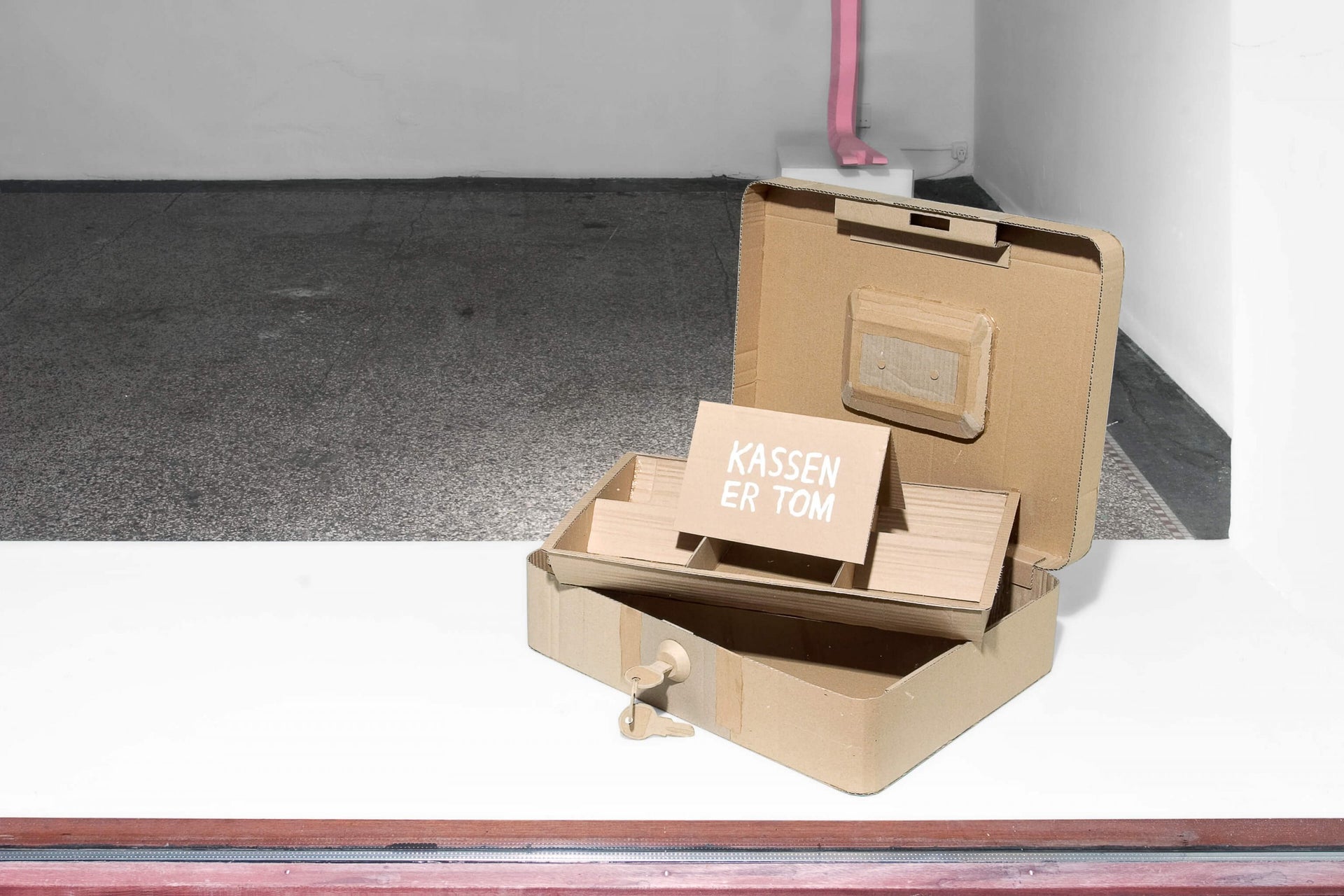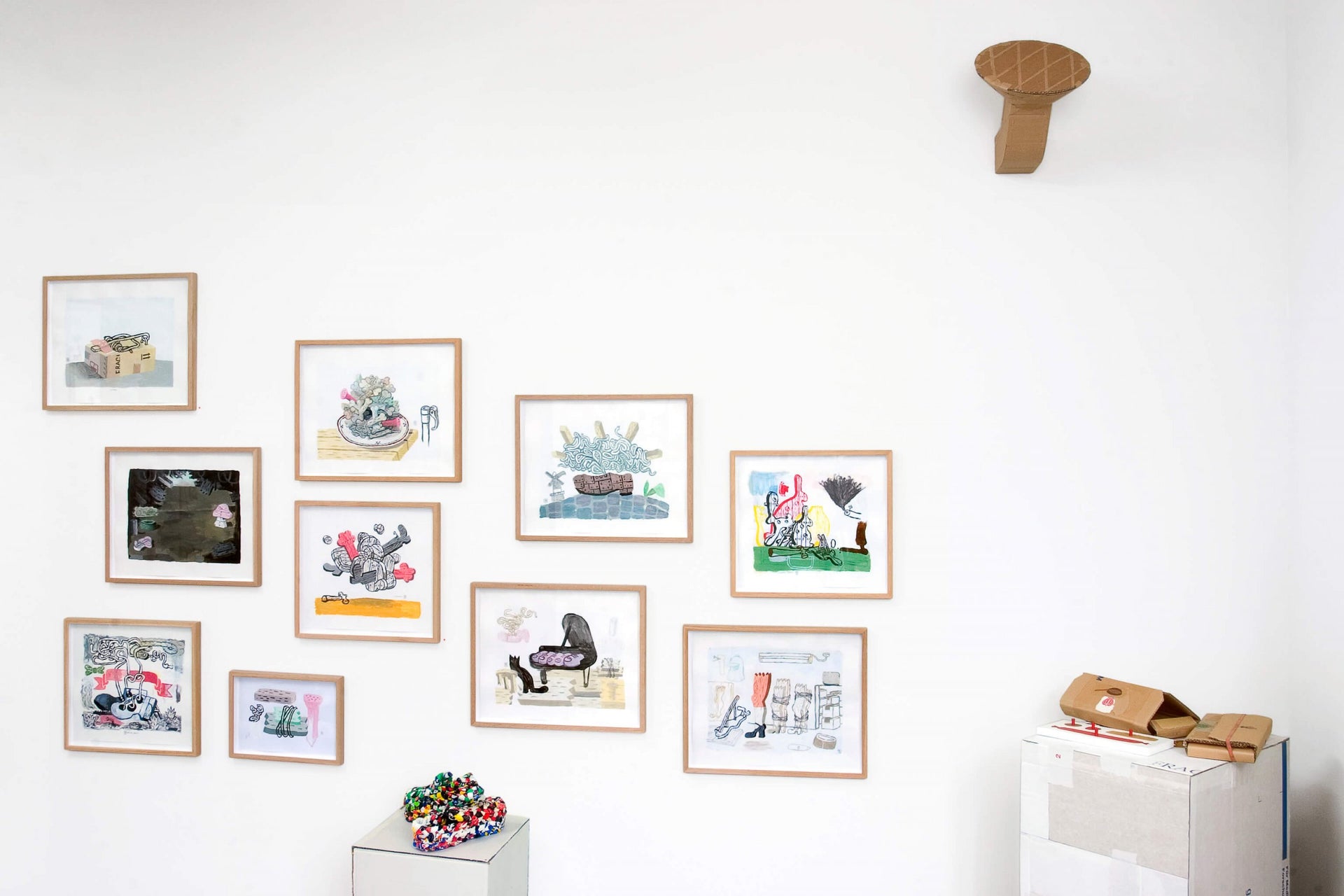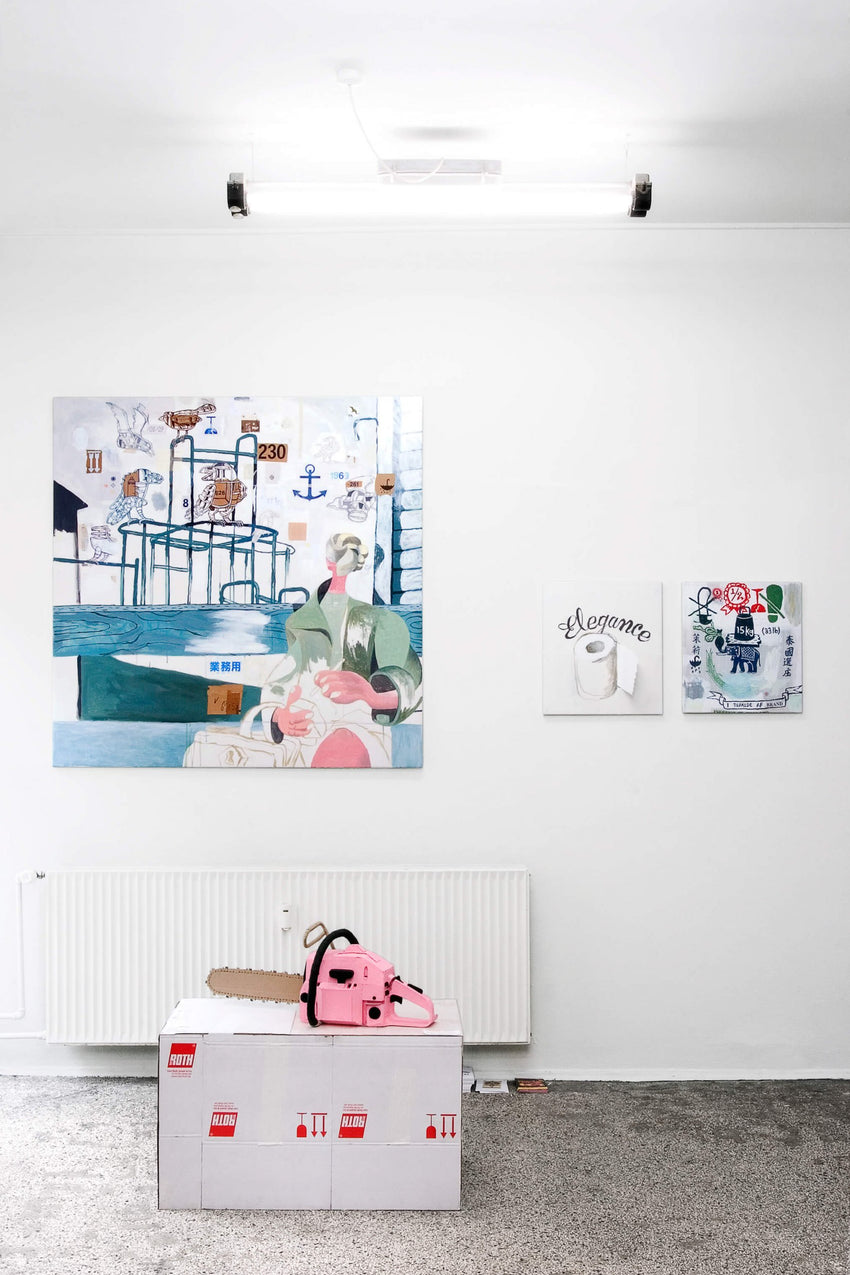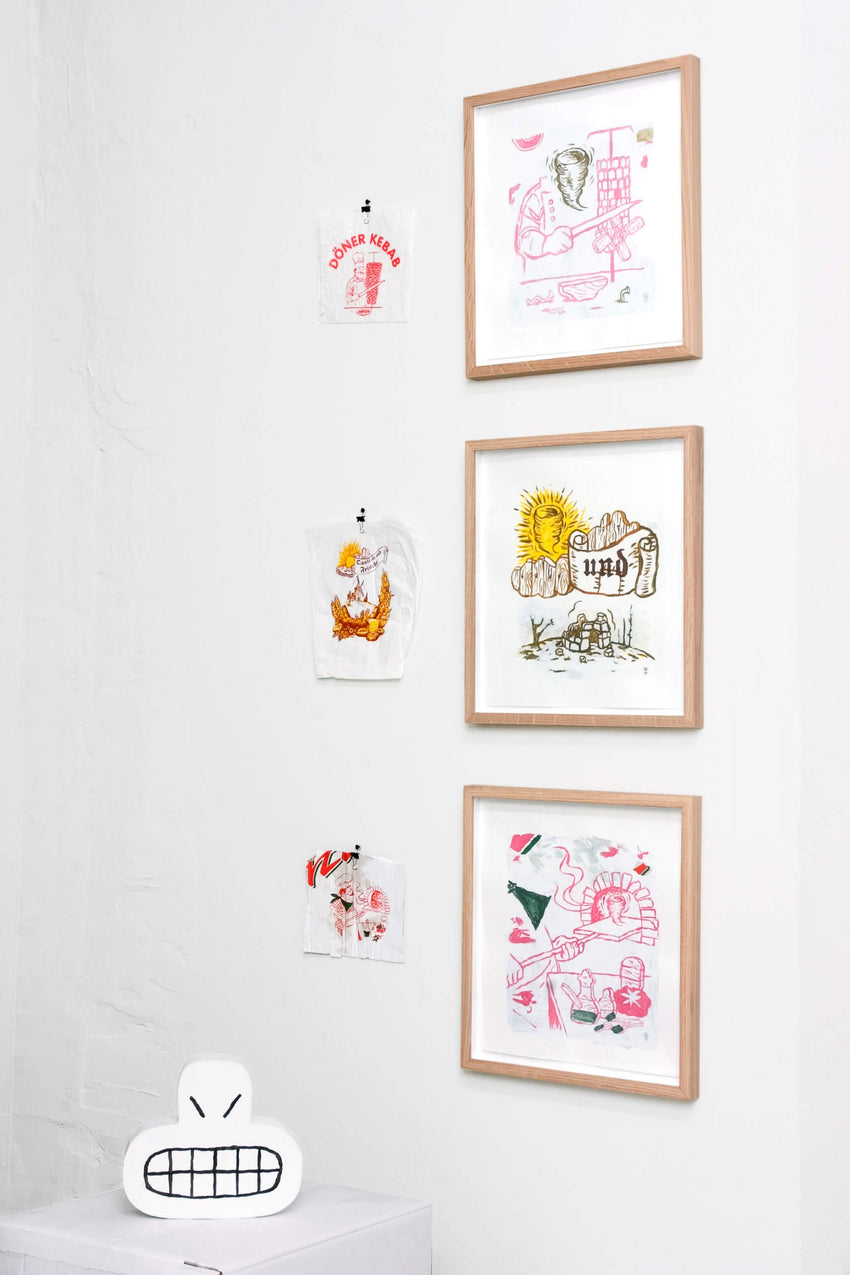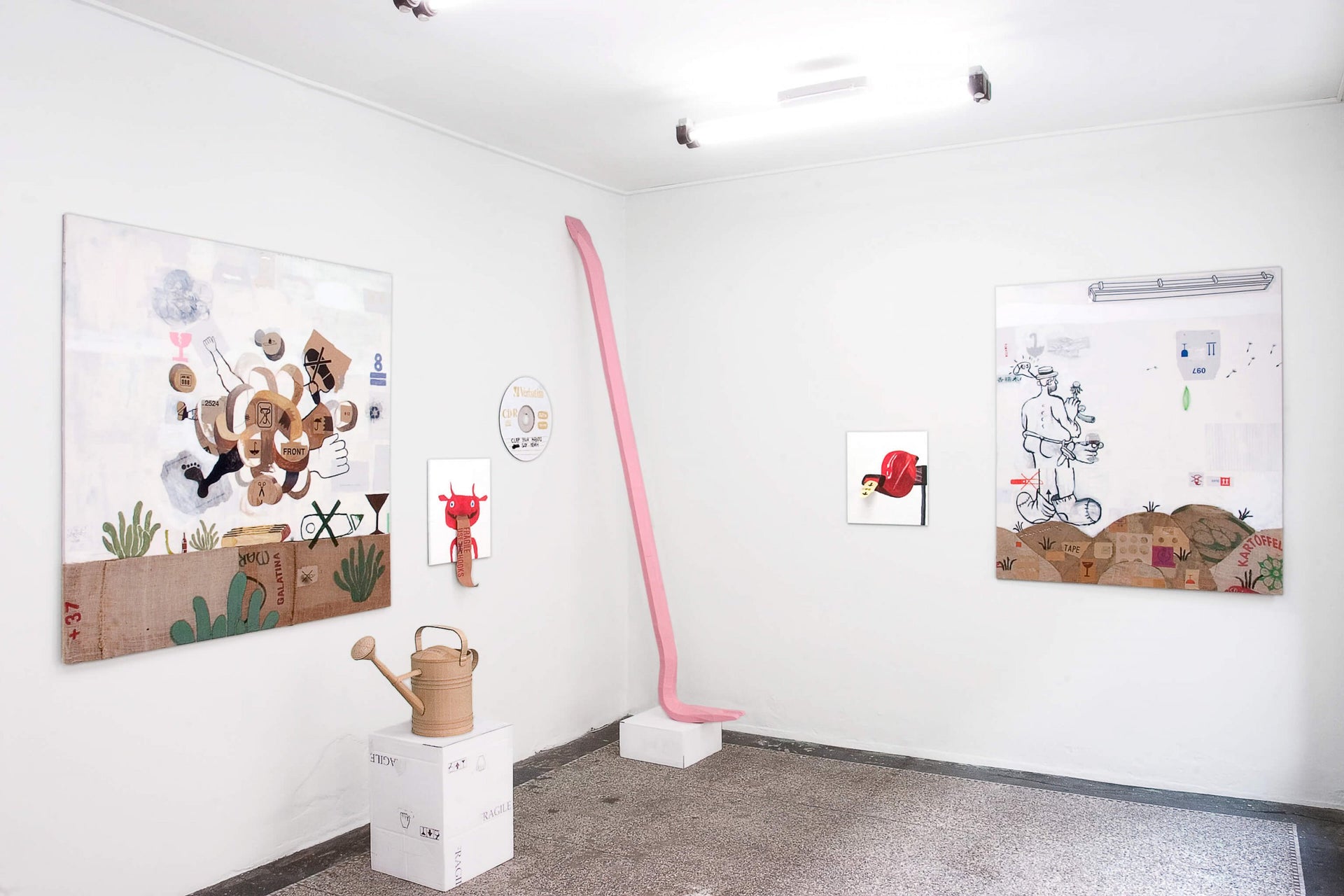V1 Gallery proudly presents
CARTONERO
A solo exhibition by Papfar aka Søren Behncke
Søren Behncke and his alias Papfar (meaning cardboard dad, a slang for stepdad) is an integral part of the contemporary art scene in Denmark. He is well-known and loved for his art, which has occupied both the public sphere as well as several galleries. Former remarkable works count the giant slingshot he donated to Ron Mueck's sculpture 'Boy' at Aros in Århus, the human-sized cardboard-rabbits that suddenly took up a position in Århus' streets alongside their human fellow citizens, his quirky and amazingly life-like paintings and the impressive tractor he built on the scale of 1:1 in connection with the exhibition Hvor Er Papfar (Where is Papfar?) at V1 gallery in 2005. Most recently he gave the infamous Little Mermaid a four metre long hacksaw made out of cardboard.
In Søren Behncke's world Papfar is a gold digger and the gold is packing and wrapping. Especially cardboard, plastic and sacks made out of cloth form the backbone of his exhibitions. Behncke's fascination with materials most people regard as waste has thus formed the leitmotif of Behncke's artistic career. And with his second solo exhibition at V1, Cartonero, Behncke certainly hasn't changed his motive.
Cartonero (the title is refering to the people in Buenos Aires collecting paper and cardboard for recycling to make a living) consists of sculptures, paintings and a mixture of both. Behncke has among other things painted onto potato and rice sacks, which have been sown together frankenstein-style. In that way the original prints on the sacks and the way they have been stitched together integrate naturally with the painting itself. Behncke also continues his 'Ladies Tools'-series with a pink power saw and a three metre long pink crowbar made out of cardboard. Last but not least Behncke has created a gigantic mosaic sculpture formed out of books. The image is a tree and the books have been borrowed from libraries by 19 different people, which gives the sculpture a limited life span. The sculpture is thus both an independent work, but also a portrait of Behnckes entire artistic work.
Behncke's art is in many ways a gift to the beholder, whom is invited to contemplate his or her own humdrum and everyday surroundings with a fresh set of eyes. Cartonero's landscape is strong and shattery, humouristic and honest and litterally a cardboard caricature of everyday life. As a spectator one feels at home in a foreign territory. Or maybe like a foreigner in a homelike territory? Papfar's universe is a wellknown riddle to which you may have forgotten the answer.
